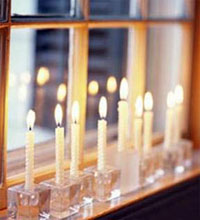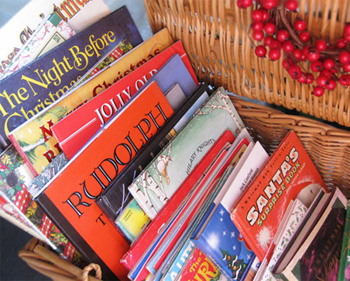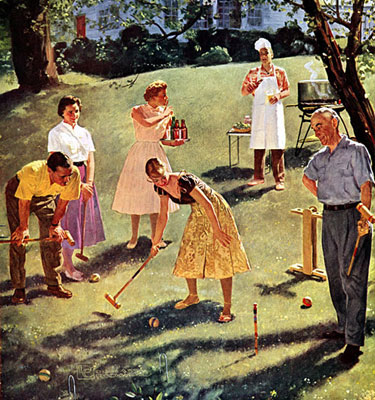 There is something very special about visiting London during the holidays. The streets and stores are beautifully decorated and an overall "spirit" of the season is evident throughout the city. No matter where you stroll, there's "Christmas in the air" - whether it's the rows of fresh wreaths hung in Edwardian doorways, the gold holly and red berry garland that decorates Regent Street, the twinkle lights illuminating the posh shopping on Jermyn Street, the musical decorations inspired by the Rolling Stones on Carnaby Street, the Santa Land and Christmas Market in Hyde Park, the enormous fully decorated tree in Trafalgar Square, or the giant red ornaments at Covent Garden.
There is something very special about visiting London during the holidays. The streets and stores are beautifully decorated and an overall "spirit" of the season is evident throughout the city. No matter where you stroll, there's "Christmas in the air" - whether it's the rows of fresh wreaths hung in Edwardian doorways, the gold holly and red berry garland that decorates Regent Street, the twinkle lights illuminating the posh shopping on Jermyn Street, the musical decorations inspired by the Rolling Stones on Carnaby Street, the Santa Land and Christmas Market in Hyde Park, the enormous fully decorated tree in Trafalgar Square, or the giant red ornaments at Covent Garden.
Of course Victorian London has had a strong role in how we celebrate Christmas today. A visit to the recently renovated The Charles Dickens Museum will remind anyone of the British influence on this festive holiday. As most of us know, Dickens wrote A Christmas Carol, which was published on December 19, 1843 and is often considered responsible for the revival of Christmas celebrations.
It may surprise some to know that Christmas was not a holiday in early America. From 1659 to 1681, the celebration of Christmas was actually outlawed in Boston. Anyone exhibiting the Christmas spirit was fined five shillings. After the American Revolution, English customs fell out of favor, including Christmas. Christmas wasn't declared a federal holiday until June 26, 1870. Apart from adding to the language of Christmas, with "scrooge","bah, humbug!" and all the rest of it, Dickens' book essentially renewed the Christmas tenets of family, good cheer, feasting, gift-giving and charity as well as popularizing the phrase "Merry Christmas!"

 It’s not easy being Jewish during the Christmas season, especially if
you’re a kid. Chanukah is great, don’t get me wrong. Presents for eight
nights in a row. Lighting the candles and watching them flicker in the
menorah until they gradually fade away. And I’m a big fan of the latke.
But compared to Christmas? Really?
It’s not easy being Jewish during the Christmas season, especially if
you’re a kid. Chanukah is great, don’t get me wrong. Presents for eight
nights in a row. Lighting the candles and watching them flicker in the
menorah until they gradually fade away. And I’m a big fan of the latke.
But compared to Christmas? Really? I grew up singing Bach hymns before dinner. We were all terrible singers, but it didn’t matter: my mother trained us to sing in parts. Children, adults and even teenage boys would toil our way through “Now Thank We All Our God.” My mother wasn’t interested in musical quality, but in the virtues of complexity and genius.
I grew up singing Bach hymns before dinner. We were all terrible singers, but it didn’t matter: my mother trained us to sing in parts. Children, adults and even teenage boys would toil our way through “Now Thank We All Our God.” My mother wasn’t interested in musical quality, but in the virtues of complexity and genius.  'Tis the season of spreading good cheer and spreading waistlines. We have all heard it before – the average person gains one pound a year during the holidays. That is, except for French women, who apparently don't gain weight, ever.
'Tis the season of spreading good cheer and spreading waistlines. We have all heard it before – the average person gains one pound a year during the holidays. That is, except for French women, who apparently don't gain weight, ever. If you’re a mom or dad, you know how hectic it can get around the holidays. You wish there were more hours in a day, your mood is less than jovial and your toddler can feel it. But you don’t want him to get lost in the shuffle; he just wants to be a part of the planning, baking and all the wonderful festivities. Make time for the two of you. Not only is it fun, but a great way to calm down and enjoy the moment.
If you’re a mom or dad, you know how hectic it can get around the holidays. You wish there were more hours in a day, your mood is less than jovial and your toddler can feel it. But you don’t want him to get lost in the shuffle; he just wants to be a part of the planning, baking and all the wonderful festivities. Make time for the two of you. Not only is it fun, but a great way to calm down and enjoy the moment.
